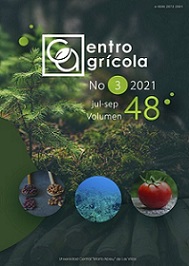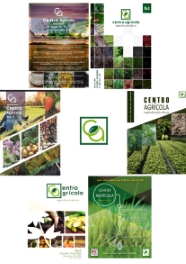Issue 1 - 2016 Article Count: 13
Editorial Note
After an intense work in the improvement of the journal, Centro Agricola started this 2016 with its first issue, beginning volume 43 with interesting results on the dry matter and the primary macroelements in the leaf biomass of sugarcane fertilized with potassium. Subjects as varied as the effect of Heterorhabditis bacteriophora on the coffee borer, the relationships between the quality indicating properties in two subtypes of brown soil, the characterization of test locations for resistance to brown rust of sugarcane, as well as the mycobiota associated with cocoa fruits with symptoms of moniliasis and the antifungal activity of aqueous extracts of Spathodea campanulata Beauv. On common bean rust, can also be found in this issue. As a novelty to be mentioned, the entomofauna associated with soybean in the direct seeding system, the effect of Rhizobium on phenotypic parameters and nitrogen fixation on common bean genotypes, and the morphological and productive indicators of the tomato crop in greenhouse With agroecological management in the Ecuadorian Amazon. The brief communication in the presence of fungal pathogens in soil cultivated with three soybean varieties closes the contents of this issue. The magazine continues to work intensely on increasing the scope of its publications and improving its image through its new website.
The Editor
Issue 2 - 2016 Article Count: 11
Issue 3 - 2016 Article Count: 12
Editorial Note
Dear users and partners:
Centro Agrícola up to number 3 of 2016 with interesting results on the effect of Trichoderma harzianum Rifai and Fitomas-E® as biostimulants as germination and seedling growth of tomato, some aspects of the ecology and biology of Asyndetus sp. and the characterization of some physical-mechanical and chemical properties in banana. Topics as varied as the alternative for the control of Sitophilus oryzae, the effect of different sources of phosphorus, cachaça and microorganisms on tomato seedlings, energy technology innovation in rural communities, morphoagronomic characterization of sorghum plants regenerated by somatic embryogenesis, and a review of the current situation and prospect of Arachis pintoi in agroecosystems dedicated to animal production can also be found in this issue. As something new to highlight is the report of the mycobiota associated with peanut seeds (Arachis hypogaea L.), a communication brief closing the contents of this issue.
The editor



